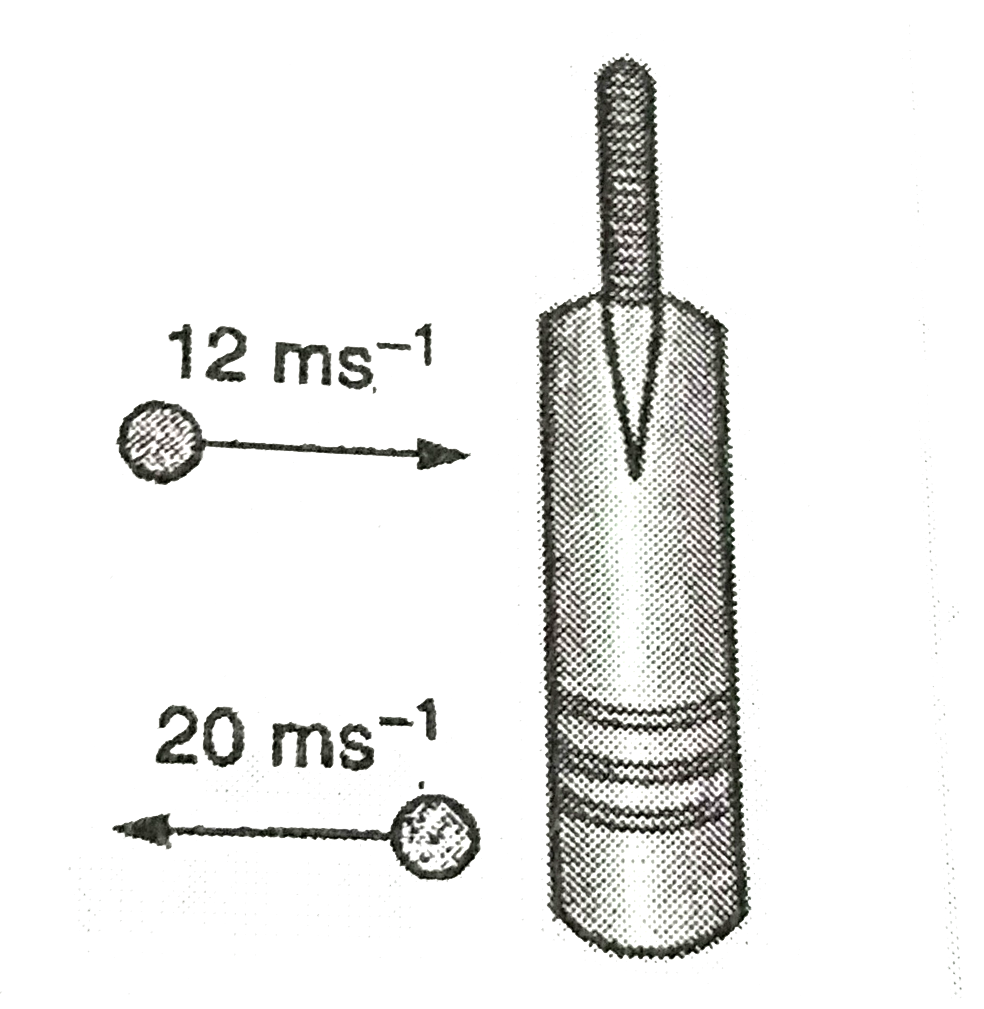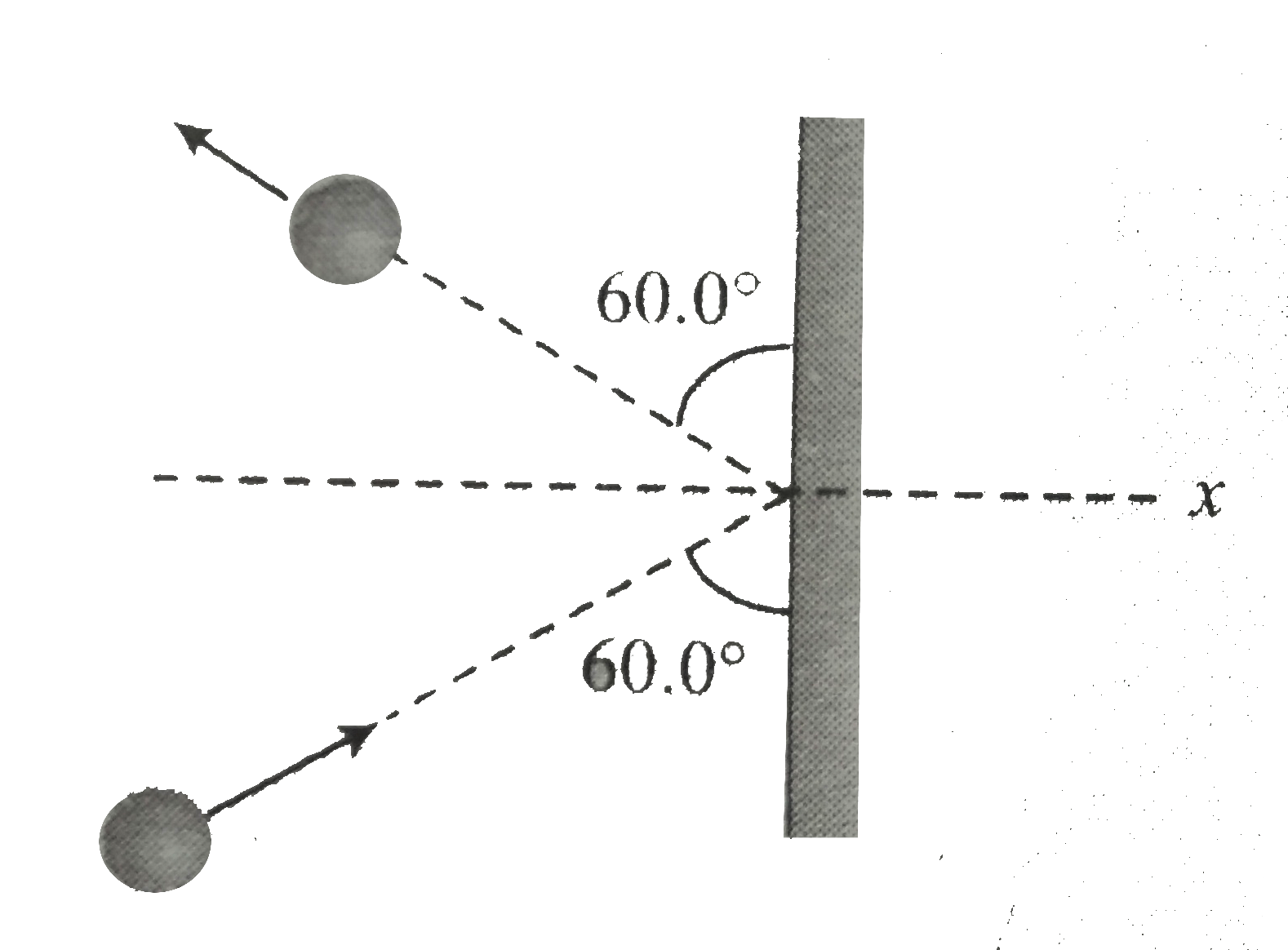a. Estimate the force with which a karate master strikes a board, assuming that hand's speed at the moment of impact is 10.0ms−1, decreasing to 1.00ms−1 during a 0.002s time interval of contact between the hand and the board. The mass of his hand and arm is 1.00kg .
b Estimate the shear, assuming this force it exerted on a 1.00cm thick pine board that is 10.0cm wide.
c. If we maximum shear stress a pine board can support before breaking is 3.60×106N/m2, will the board break?
We will use the impulse momentum theorem to find the force on the had, which is equal in magnitude to the force on the board. Then the definition of shear stress wil let us compute that quantity to se if it is large enough to break the board.
The impulse momentum theorem descrbes the force of te board on his hand.
Ft=mvf−mvi
F(0.002s)=(1.00kg)(1.00ms−1−10.0ms−1)
and F=−4500N
a. Therefore, the force of his hand on board is 4500N.
b. That force produces a shear stress on the area that is exposed whn the board snaps:
Stress=FA=4500N(10−1m)(102m)=4.50×106Ns−1m−2
c. yes, this is larger than 3.60MNm2 and suffiices to break the board.
We do not have the right combination of information to use the work kinetic energy theorem to find the force. We could compute the acceleration of the hand and use Newton's second law to find the same 4.50kN force, but writing the impulse-momentum theorem is more direct. The area in stress = force / area of the layers of molecules between which the stress produces distortion (strain).
Topper's Solved these Questions
- PROPERTIES OF SOLIDS AND FLUIDSBook:CENGAGE PHYSICS ENGLISHChapter:PROPERTIES OF SOLIDS AND FLUIDSExercise:Solved Examples
Explore 11 Videos
- PROPERTIES OF SOLIDS AND FLUIDSBook:CENGAGE PHYSICS ENGLISHChapter:PROPERTIES OF SOLIDS AND FLUIDSExercise:Exercise 5.1
Explore 12 Videos
- NEWTON'S LAWS OF MOTION 2Book:CENGAGE PHYSICS ENGLISHChapter:NEWTON'S LAWS OF MOTION 2Exercise:Integer type
Explore 1 Video
- RIGID BODY DYNAMICS 1Book:CENGAGE PHYSICS ENGLISHChapter:RIGID BODY DYNAMICS 1Exercise:Integer
Explore 11 Videos
Similar Questions
The friction coefficient between the board and the floor shown in figure is μ Find the maximum force that the man can exert on the rope so that the board does not slip on the floor

View SolutionThe friction coefficient between the board and the floor shown in figure is μ Find the maximum force that the man can exert on the rope so that the board does not slip on the floor

View Solution
Knowledge Check
A constant force acting on a body of mass of 5 kg change its speed from 5ms−1to10ms−1 in 10 s without changing the direction of motion. The force acting on the body is
A1.5NB2NC2.5ND5N
A cricket ball of mass 150 g is moving with a speed of 12ms−1 and is hit by a bat so that the ball is turned back with velocity of 20ms−1 if duration of contact between bat and ball is 0.01 s then:

View SolutionA player caught a criket ball of mass 150 g moving at the rate of 20ms−1 . If the catching process the completed in 0.1s , the force of the blow exerted by the ball on the hands of the player is
View SolutionFind the rank of the matrix [00−11]
View SolutionA man holds a 2 kg book between his palms. so that each hand exerts the same horizontal force on the book. The coefficient of static friction between the palms and the book is 0.4 and g = 10ms−2. If the book is prevented from falling, the least force exerted by each hand on the book is
View SolutionA 3-kg steel ball strikes a wall with a speed of 10.0ms−1 at an angle of 60.0∘ with the surfaces of the wall. The ball bounces off with the same speed and same angle. If the ball was in contact with the wall for 0.2s, find the average force exerted by the wall on the ball.

View SolutionA hammer of mass 1 kg strikes on Ihe head of a nail with a velocity of 2ms−1 . It drives the nail 0.01 m into a wooden block. Find the force applied by the hammer and the time of impact.
View SolutionA hammer of mass 1 kg moving with speed of 6ms−1 strikes a wall and comes to rest in 0.1 s . Calculate (i) the impules of force (ii) the retardation of the hammer , and (iii) the retarding that stops the hammer .
View Solution